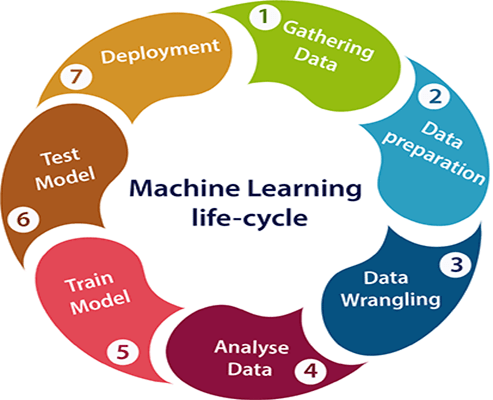Machine Learning Lifecycle

The machine learning lifecycle encompasses the series of steps involved in developing, deploying, and maintaining machine learning models. While variations may exist depending on the specific project or organization, the following phases represent a typical machine learning lifecycle:
-
Problem Definition:
- Define the problem or task that the machine learning model aims to solve. Clearly articulate the objectives, success criteria, and constraints of the project.
-
Data Collection:
- Gather relevant data from various sources, ensuring it is representative, accurate, and of sufficient quality for training the machine learning model.
-
Data Preprocessing:
- Clean the data by handling missing values, outliers, and inconsistencies. Perform transformations such as feature scaling, normalization, and encoding categorical variables.
-
Exploratory Data Analysis (EDA):
- Analyze and visualize the data to gain insights into its distribution, patterns, and relationships. Identify relevant features and correlations that may inform the model selection and training process.
-
Feature Engineering:
- Select, create, or transform features to improve the predictive performance of the machine learning model. This may involve dimensionality reduction, feature selection, or generating new features based on domain knowledge.
-
Model Selection:
- Choose the appropriate machine learning algorithm(s) based on the problem type, data characteristics, and performance requirements. Consider factors such as interpretability, scalability, and computational complexity.
-
Model Training:
- Train the selected model(s) on the prepared dataset using suitable training algorithms and techniques. Optimize hyperparameters and evaluate performance metrics on validation data to iteratively refine the model.
-
Model Evaluation:
- Assess the performance of the trained model(s) using evaluation metrics relevant to the task, such as accuracy, precision, recall, F1-score, or area under the ROC curve (AUC). Compare different models and select the best-performing one.
-
Model Deployment:
- Deploy the trained model into production or real-world environments where it can make predictions or decisions on new, unseen data. Integrate the model into existing systems, applications, or workflows.
-
Monitoring and Maintenance:
- Monitor the deployed model's performance and behavior in production to detect drift, degradation, or anomalies. Retrain the model periodically or as needed with new data to ensure it remains accurate and up-to-date.
-
Documentation and Reporting:
- Document the entire machine learning process, including data sources, preprocessing steps, model architecture, hyperparameters, and evaluation results. Prepare comprehensive reports or presentations to communicate findings and insights to stakeholders.
-
Feedback Loop:
- Establish mechanisms for collecting feedback from end-users, domain experts, and other stakeholders. Use feedback to iteratively improve the model, address issues, and incorporate new requirements or insights into future iterations of the machine learning lifecycle.
By following this structured lifecycle approach, organizations can effectively develop, deploy, and maintain machine learning models that address real-world problems and deliver actionable insights and value.
Thank you,
